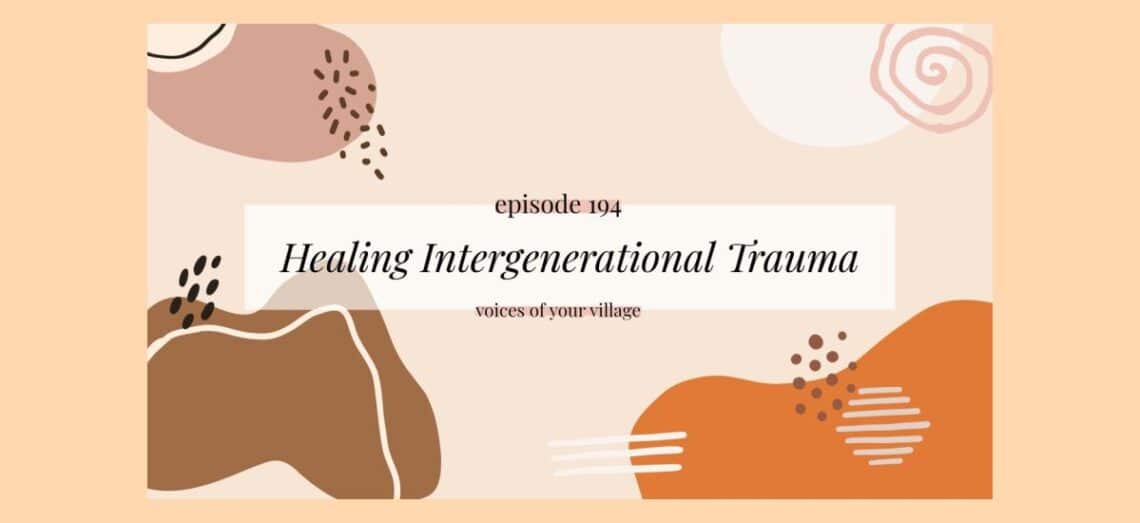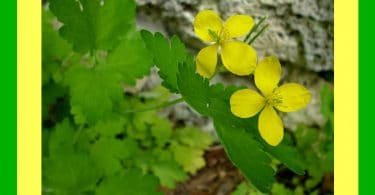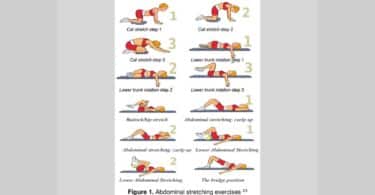This is a portrayal of a collective family treatment based on ancestral trauma. All three members of the two surviving generations treated, responded to different derivatives of the same remedy.
Often, when one member of a family is brought for treatment the ‘pivot of distress’ does not necessarily lie within that patient. This means that the influence of the family dynamic, if damaging, acts as a ‘maintaining cause’. I believe this is often an overlooked feature in case taking in homeopathy, particularly with the recent understanding of ‘epigenetics’, i.e. how trauma can be transmitted in gene expression through the generations without directly affecting the DNA. This toxic influence filters significantly into the miasmatic load one is treating.
The remedy – Carcinocin – and the miasm it represents – is a classic example of a nosode that applies to this phenomenon. It is often mentioned in teaching that survivors of the Holocaust resonate with this remedy, with all the fear and guilt that every influence perpetuates. This makes sense as Carcinocin is a combination of all the three major miasms incorporating, Medorrhinum, Syphilinum, and Tuberculinum.
In this particular family, the pivot of distress emanated from the (now deceased) first generation, the grandfather (R). This was evident in the father (L) and then subsequently the two children of the family I treated. The history was that (R) had been very dismissive and diminishing of his son (L) – second generation – my first patient (aged 46), whose early years, as a result, had become blighted by these ‘primal messages’. The description by (L) of his experience was that he felt like an ‘orphan’ and like a ‘fugitive on the run’. The terror he carried was compounded by his enmeshment with his mother’s ordeal of breast cancer. This meant that he felt responsible for carrying this burden within the family with the emotional ‘absence’ of his father. This pushed (L) into a very driven state of abandonment, clouded with guilt. The remedy he subsequently responded to was Magnesium Bromatum. In fact, when his father died two years later, he was able to face the funeral without the tremendous acrimony he had accumulated towards him till then.
It was a couple of years afterwards that his two sons presented for treatment – their ages were twelve and nine at the time. They both required different Magnesium remedies. When checking the father’s old notes, I was reminded that he too received a Magnesium remedy, if yet a different one within that family of remedies. This made me realize that the grandfather’s dysfunction had never been addressed within the family at the time (L) presented to me. Even though (R) had had minimum contact with his grandchildren, his influence acted as a ‘maintaining cause’ to disseminate the feelings of abandonment percolating through the generations. In fact, I believe, if the remedies had not been given at this point, the perpetuation of this ‘wound’ would have been recycled through future generations of that family.
(L’s) older son – (M) – third generation – presented with school refusal. The story was that he woke up so depressed that he could not get out of bed for hours. He saw himself as being assigned the role of peacemaker in the family dynamic but, at the same time, he felt ignored by the other members. Often, I have found that children whose parents carry an unresolved issue act it out by ‘staying put’ to ‘keep guard’. His sense of low mood and lack of motivation were of obvious concern and his parents were often, understandably, locked in arguments about this. It was interesting that the mother did not present for treatment as she expressed the awareness the fundamental issue did not reside with her. The remedy that (M) responded to was Magnesium Muriaticum, which complies with the whole theme of peace mongering in ‘war-torn’ families as well as a sense of deep neglect. This, being a major liver remedy, has many rubrics appertaining to low mood on waking, for example: ‘dullness, sluggishness, on rising, in the morning’, ‘indifference, apathy in the morning on waking’, ‘loathing on waking’. On reevaluating his case nine months later, everyone was happy that he was no longer ‘keeping vigil’ at home but had become proactive in his school curriculum and friendships.
His younger brother (F) – again third generation – presented with lack of vitality and very poor appetite. His indifference to life was quite marked at the time. There was little overt articulation of emotions beyond this. The feedback from school was that he ‘was away with the fairies’ whenever a task was set. It transpired later that, having witnessed his brother’s incalcitrance about school attendance, he was quite understandably, dreading the transfer to secondary school. Therefore, unconsciously, he just shut down academically. His ‘failure to thrive’ and to assimilate life events as well as food was soon reconciled with the remedy, Magnesium Carbonicum. He went on to separate from the family drama and stand up for his autonomy within all the enmeshment. Needless to say, he started applying himself with good results in lessons.
I concluded from these cases that it was as if these children were perpetuating the family message – through the male line – of the threat to their very right to exist. After their treatments, as well as that of their father, it was as if the ‘offending member’ could be diffused of his (ie. the grandfather – R’s) influence – albeit that he was already dead by then – and the family dynamic could be healed and integrated at source.
I believe that this type of missing link in our cases is the ‘elephant in the room’. However, this is what informs the whole contributing way of being in forthcoming generations. When being taught homeopathy, one learns about miasms according to the disease process and objective/subjective symptoms. However, there is little recommendation of exploring the timeline according to the vital ‘ancestral blueprint of inherited trauma’. I believe homeopathy is one of the few therapies that addresses this transmission through the generations. This, in turn, creates a clear state for the victim to embrace a life free of this blight.
The individual susceptibilities of the family members indicated their differences but, in a family which is so enmeshed, the individuation is limited and this explains why they all needed the same remedy – albeit different derivatives – to initiate this vital healing process. The father’s (L) treatment alone was not sufficient to shift the focus in his sons as he was so caught up in his own pattern of ongoing dysfunction, especially while his father (R) was still alive. However, when all the male members came to me for treatment, true healing triumphed for all involved. Not only is this way of working empowering to the individuals, but it also ‘clears the slate’ for future generations to come.
In these cases, these were ‘essence’ prescriptions. I used 200c potency to promote rapid but lasting cures, as well as ones that reached back into the past case histories. The family history elicited in the contents of this article, was both through the ‘epigenetic’ route and that of the standardly recognized miasm. This combined approach sheds light on the focus of cure.
I was interested when exploring the rubrics of the Magnesium remedies to realize that they not only cover ‘abandoned, forsaken feelings’, but also ‘anger, ailments after anger, vexation’. This means that sometimes, one may consider Staphysagria for this latter symptom, but actually, one should not overlook the Magnesiums (albeit in plain type as compared to Staphysagria in black type in the rubric). It is this often-unexpressed anger which represents an acting out of the family dysfunction in the cases mentioned here.
Both Magnesium Carbonicum and Magnesium Muriaticum appear in the rubric ‘indolence, averse to work’, which complies with both (M) and (F’s) cases.
Magnesium Bromatum had not been explored until Jan Sholten shed light on this derivative in ‘Homeopathy and Minerals’. The concepts are broken down into:
- Magnesium – pacifism, aggression, fear of loss and pain.
- Bromatum – guilt, restless, escape, passion, instinct, psychotic.
In this book, a case is quoted where the presenting patient found it hard to express their feelings. The history was that the father was very dominating and did not give the mother much freedom. This background resonates with (L’s) case mentioned here.
Interestingly, Magnesium Muriaticum commonly features in black type in the rubrics: ‘homesick’, ‘hysteria’, both of which I believe comply with (M’s) case. His behaviour was a true sign of hysteria and I am reminded that hysteria is not just a female phenomenon. Maybe, Magnesium Muriaticum could be added to the rubric ‘hysteria in a man’, alongside Carcinocin, Crocus Sativa, Medorrhinum, and Moschus, remedies that already feature under this rubric.
Magnesium Carbonicum has an interesting rubric: ‘absent minded while writing’ where it appears in Murphy’s Homeopathic Clinical Repertory (Third Edition, 2005) alongside only three other remedies, two of which are very obscure (Aconite, Kola , Quassia amara). This confirms Magnesium Carbonicum is a good remedy for learning issues, as portrayed in (F’s) case – featuring in other comparable rubrics such as, ‘mistakes in writing’, ‘memory, weakness of’ (both in black type).
Here, it reminds one of Medorrhinum, but unfortunately, like the other nosodes, it is not well represented in the repertories. I had always previously considered Magnesium Carbonicum to be a primarily tubercular remedy, but this aspect of the mental picture in this case also shows its considerable affinity with the sycotic miasm.
In my experience I have found Magnesium Muriaticum is often better indicated after childbirth than Sepia to address post-natal depression, when bonding between mother and child is absent. This is a time when the ‘uncompensated state’ often reveals itself. This indicates that the woman cannot cover up her true feelings with all the turmoil in the hormones occurring combined with the huge adjustment in care-taking demanded of her. There is a tendency to use Sepia routinely for this state but when this rupture is rooted in emotional neglect within the mother’s history, then Magnesium Muriaticum heals in a more radical way. Not only does it reconcile the presenting situation with long-term implications for both parties affected, but also acts retrospectively reaching back to the root at the source of the distress in the mother. Interestingly, this remedy does not appear in the rubric in Murphy’s Homeopathic Clinical Repertory: ‘depression after childbirth’, where it should, in my opinion, take pride of place. Sepia, naturally, appears in black type, alongside Sulphur in the same rubric.
Given the fact that Magnesium Muriaticum is a major liver remedy and that hormones are processed in the liver, it makes sense that new mothers need this remedy because they are so adversely affected after childbirth when their hormones undergo marked turmoil. The true ‘ability to adapt to changes’ is severely challenged at this time. This involves lifelong implications for the symbiosis between mother and child and all its disruption can damage both mother and child long-term. This can extend through the generations to follow. The woman with post-natal depression needing this remedy will often come from a family constellation such as that portrayed in this detailed study of the background to the Magnesium state. So the missing factor of transgenerational trauma commonly plays itself out in new mothers as well as fathers, for that matter, as illustrated here.
Homeopathy comes into its own to stem this effect’s onward transmission, which otherwise can so easily fall ‘beneath the radar’.
________________________________________
Note: Kent’s rubrics, found in Agrawal (Indian Edition, 1985), were used for the selected rubrics unless specified otherwise.





I find this to be such a great article that I will constantly as I have with some cases search out the ancestral load and if it is there apply this wonderful learning, tx lots Elizabeth Adalian for this, Laura